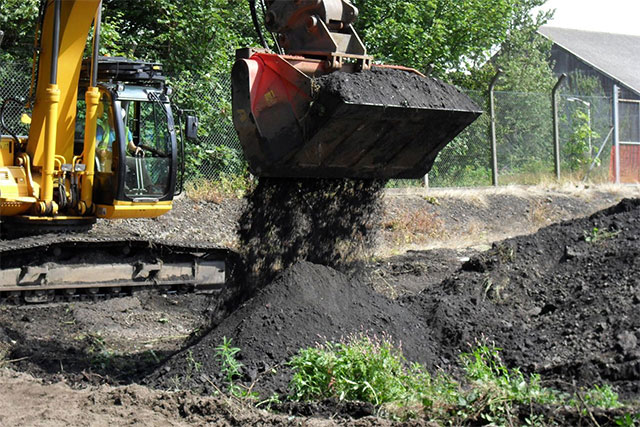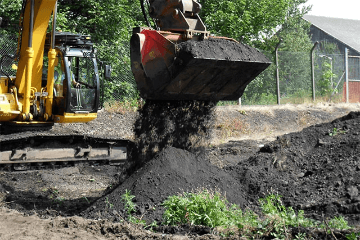Bioremediation involves enhancing / controlling biological processes to reduce the contaminants of concern to target levels.
Bioremediation is widely used to remediate organic contaminants (e.g. fuel and fuel oils), in general bioremediation is a significantly more economic option to straight disposal, however it can take anything from 1 month to several months to carry out. Its suitability is based on the contaminants, site conditions, and target levels. If you want to find out if bioremediation is an option for your site then you should phone or e-mail us, we’re always happy to discuss a site with you.

What is Bioremediation ?
Bioremediation is the a biological degrading processes for the treatment of contaminated soils, groundwater and/or sediments, relying on microorganisms including bacteria and/or fungi to use the contaminant(s) as a food source with resulting degradation of the contaminant. Bioremediation is one of the most economic remedial techniques presently available for treating most organic fuel based contaminants such as coal tars and liquors, petroleum and other carcinogenic hydrocarbons such as benzene and naphthalene, and some inorganics. Hydrocarbon bioremediation and soil bioremediation are the most common services we provide of this type.
Biostimulation
Natural attenuation of certain contaminants occurs in soils, biostimulation is a method of increasing the rate of the natural degradation processes. Techniques for this involve identifying limiting factors in the natural processes, for example oxygen availability for the bacteria which is often limited in soils at depth, and balancing that factor to increase the rate of degradation.
Bioaugmentation
Bioaugmentation is process where contaminant specific degrading bacteria are introduced to the contaminated media to promote / enhance degradation. This process is not as simple as it sounds as bacteria are in general suited to certain types of soils and pHs etc and therefore introduction to a new environment involves identifying the right bacteria for the new environment, and managing the contaminated materials once bioaugmentation has been undertaken.
Bioremediation can be undertaken in-situ (i.e. with the soils / groundwater in the ground) or ex-situ (i.e. excavated soils or water pumped from the ground.
In-situ bioremediation
In-situ bioremediation causes minimal disturbance and avoids the necessity to replace the contaminated materials, however the limitations of in-situ bioremediation are that only certain types of soils can be bioremediated in-situ, and complete degradation is often difficult to achieve. Bioremediation is of course only undertaken if it is possible to reduce contaminants to below guideline levels.
Ex-situ bioremediation
Ex-situ bioremediation can involve bio-piles / windrows, where soils are manipulated in to structures to enhance temperature and aeration amongst other variables, and use of bioreactors to process the material in a highly controlled environment.



